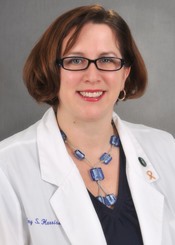Program Information
Utilizing Electronic Medical Record Data to Quantify Physics Clinical Efforts
A Harrison*, L Babinsky , J Keller , Y Yu , L Doyle , Sidney Kimmel Cancer Center at Thomas Jefferson University, Philadelphia, PA
Presentations
SU-I-GPD-P-19 (Sunday, July 30, 2017) 3:00 PM - 6:00 PM Room: Exhibit Hall
Purpose: To quantify physicists’ time commitments directly supporting clinical operations including special procedures. Electronic medical record quality checklist(QCL) items and special procedures(SP) charge codes(CC) were collected for two years from 2 departments QCLs and 5 departments SP-CCs. All departments have harmonized workflows/QCL items/practice within the same electronic medical record. Full time equivalent staffing(FTE) levels for these tasks were calculated from this time study.
Methods: All QCL tasks completed by physics were distributed to 12 clinical physicists, each physicist estimated their time to complete items. SP were itemized by site/type, and sent to SP physicists(2-7 physicists) to collect times/type of procedure. HDR SP times were broken into Simple, Intermediate and Complex to match SP-CCs. Average times/procedure were generated and multiplied by number of tasks or SP-CCs to generate annual time spent by physicists completing each task-procedure. Using total times/year the FTE needed to clinically cover the physics QCL and special procedures were calculated.
Results: QCL average and median times had less than 5 minutes of variation except for nine of fifty QCL items(example: TBI and SIRT calculation tasks, restoring records and creating treatment calendars). Forty-two special procedures were evaluated. Average time/procedure was 2.46 hours. Average and median variation was <15 minutes in all but three procedures: HDR first fraction planning for skin and vaginal cuff brachytherapy and Gamma knife procedures.
Conclusion: As healthcare shifts towards larger and integrated networks, quantitative information becomes invaluable for staffing flexibility and assessing changes in departmental policy. This analysis’ strength is visualization of growth and demand changes over time and the impact on the physics workforce. This study does not quantify physics machine calibration times; quality and safety contributions; commissioning; implementation of new procedures; research, training of residents, and dosimetry/therapy students; or administrative tasks that range from budgetary to radiation safety committees.
Contact Email:
